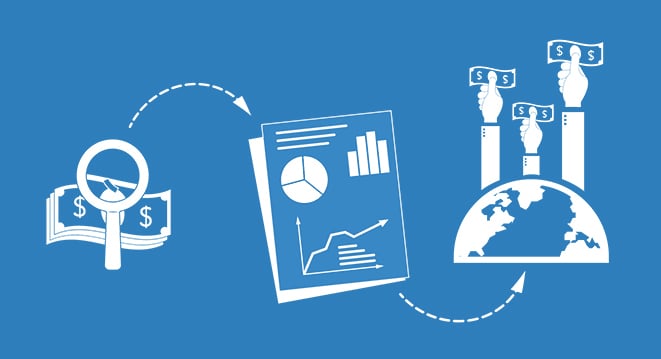The Internet doesn’t have business hours or take weekends off – neither should cutting-edge eCommerce
eCommerce hasn’t been perfected yet, but it’s getting there. The customer experience has been greatly enhanced, to the point where you can order something online simply by voicing your request to a connected smart speaker. “Alexa, order more paper towels!”
Technology has also made it easier and more efficient for sellers to fulfill these orders. Better logistics mean more efficiency and greater opportunities for profit – or at least a better ability to be agile on pricing. Much of this efficiency is based on having a deeper and more improved relationship with the parcel carriers that move and deliver what accounts for nearly 12 percent of all retail sales worldwide. Here’s how eCommerce is poised to move forward this year.
Open 24/7
According to a KPMG survey, the top reason consumers say they shop online is because they can shop at any hour on any day. The extension of this expectation is that the shipping of their purchase isn’t necessarily going to be held up until regular business hours during the next business day.
For merchants, this means investing in resources that allow them to be more responsive to quick fulfillment when orders are received.
Parcel carriers certainly haven’t reached the point of being available on demand, but they have worked to increase the frequency of pickup cycles. The top players also have increased their performance levels. During this past holiday season’s peak week, the nation’s three main parcel delivery carriers boasted on-time delivery rates of 98.4 percent (USPS), 99.3 percent (FedEx), and 99.5 percent (UPS).
However, even half a percent of parcels not delivered on time creates a ripple effect. It starts with customer disappointment, and that disappointment is aimed at the merchant rather than the carrier. While it may not necessarily repair a frazzled merchant-customer relationship, parcel carriers are obligated to refund shipping costs if they miss a guaranteed delivery time by even as little as 60 seconds.
The responsibility for monitoring delivery logistics and requesting refunds falls squarely on the merchant. For this reason, eCommerce companies are searching for ways to be more vigilant so they can recoup these refunds. Expect a growing interest in companies that specialize in tracking parcel carrier delivery performance.
It’s personal: A good customer experience is top of mind for eCommerce
Inventory and shipping software maker Veeqo gathered a group of eCommerce experts at the end of 2018 and asked them to envision what would be on the minds of most merchants throughout 2019.
These experts selected the customer experience as the top focus for eCommerce businesses. Consumers already expect extraordinary in-store experiences, and now they want something similar when they shop online. They’re no longer patient with clunky online shopping carts, and they frankly don’t care about your logistics challenges or your negotiated parcel carrier deadlines. If you can’t get it to them when they want it – which is as soon as possible – they’ll shop elsewhere.
The eCommerce experts participating in Veeqo’s roundtable agreed that merchants should focus on better customer experiences surrounding shipping and fulfillment, as well as the returns process.
Technology isn’t the sole answer to generating efficiencies
Supply chain logistics company Langham Logistics believes 2019 is the year that many eCommerce companies will start to see that the challenge isn’t having tracking software, it’s using this technology to actually solve logistics challenges. How can technology help automate and create efficiencies in the human actions involved with eCommerce fulfillment logistics?
That question will often have more than one answer. A merchant has to find internal efficiencies, but it also must look for ways to utilize parcel carrier services more efficiently to see the maximum return on investment – the unavoidable and necessary last step to customer fulfillment. Some progress on this front may come from automation and software. It also, however, might be time to take a human approach and renegotiate your parcel carrier agreements.
Looming taxes will affect eCommerce
One eCommerce trend that will affect everyone is the increase of state and local taxes that will be levied on online purchases. James Thomson from Buy Box Experts tells BigCommerce that we may see state organizations go after online sellers to recoup back taxes. “We will see a flood of companies that don’t have cash or assets available to cover these liabilities,” Thomson said.
This may lead to a disruption in the relationships eCommerce organizations have with existing customers, as new cross-border sales tax laws drive consumers to abandon favorite online stores to search for ways to avoid paying geography-based price increases.
Customer focus is still the focus
The unifying theme of what eCommerce experts see as we move forward is that it’s all about delighting the customer – who no longer wants to have an online experience that’s drastically different from shopping at a brick-and-mortar store. The challenge is that eCommerce organizations must rely on parcel carriers for the last step in this customer experience.
It will be more important than ever to scrutinize these partnerships and find ways to push them toward deeper efficiency. We can help you with this. Find out how.



